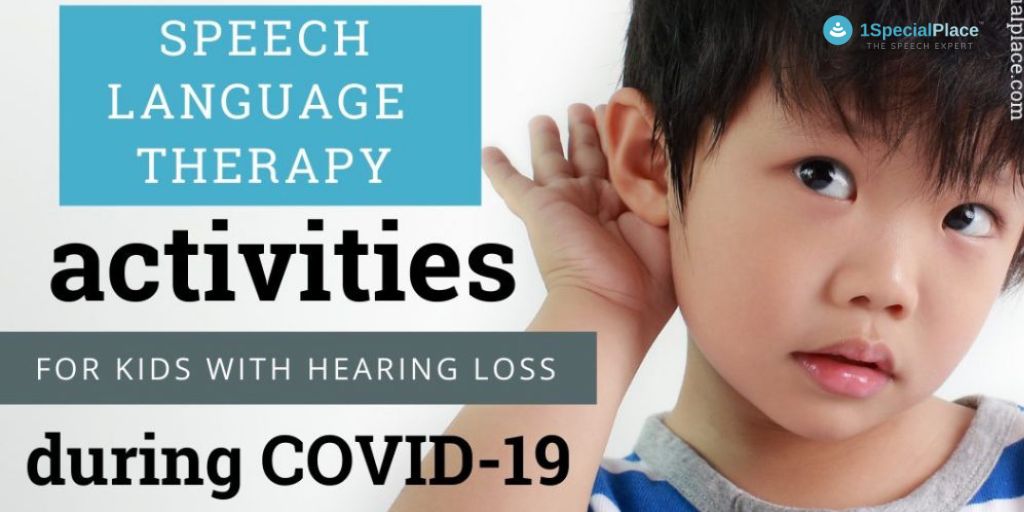
Speech Language Activities for Kids with Hearing Loss during COVID-19
Speech Language Activities for Kids with Hearing Loss during COVID-19
Read a detailed blog on Tips for hearing loss
“Always remember to generously reward your child for the responses during the activities to keep the child motivated.”
Activity 1:
To develop listening awareness, speech sound matching is a very important skill. For this activity, you can use stacking rings, blocks or shapes peg-boards. Here the child is encouraged to pick up one ring/block keep it near his/her ear. You can produce speech sound /a/ and the child has to indicate he/she has heard the sound by placing the block/ring on the table. You can repeat this activity for the speech sounds /a/ /e/ /u/ /m/ /s/ and /sh/. Each sound to be revised at least 5 times at various loudness levels (soft, medium and loud).
Read a detailed blog on Are hearing and speech related?
Activity 2:
This activity will help the child to develop speech sound discrimination skill. Here you can use small colored balls or beads in a bowl. Assign one sound to red ball and another sound to blue ball. For example, assign /a/ to red ball and /i/ to blue ball. Now, model the child that every time he/she hears /a/ to pick up red ball and if he/she hears /i/ pick up blue ball. Say the sounds alternatively and check if the child is correctly able to identify the sounds being presented. You can repeat this activity for pair of speech sounds /a/ /e/ /u/ /m/ /s/ and /sh/. Each pair to be revised at least 5 times at various loudness levels (soft, medium and loud).
Activity 3:
Speech sounds can be introduced to your child during play activities and by introducing toys and their associated sounds. You may need some toys such as animal models and a picture of a farm for this activity. You can pick up an animal model and make the associated sound as you put the animal on the farm. For example: Pick up a toy cow, say /moo moo moo/ as you put it into the farm. Encourage the child to imitate your speech movements as you place each animal on the farm. Repeat this activity for all the animal models. Your child will learn to associate meaning with speech sounds in this activity.
Read a detailed blog on All about Cochlear Implants
Activity 4:
This activity will help you facilitate and enrich your child’s comprehension of words and expression of oral language. Things required for this activity are, Mr. Potato Head or a peg board with body parts concept. Ask “What is Mr. Potato missing?” now put all the body parts in place one by one as the child requests verbally. Motivate the child to say “Daddy please put eyes” “put nose here” “please put a hat” and so on. During the activity you can make silly mistakes like putting the eyes on the head etc, and encourage the child to request “No Daddy, put eyes here” to put it into the appropriate place. This activity will stimulate speech and language development, listening skills and it will give an opportunity to your child to communicate his/her ideas.
Read a detailed blog on Inspirational story of a deaf girl
Activity 5:
To help your child understand words and use words meaningfully, this activity can be carried out. You may need some dolls, common objects available at home and a doll house for this activity. childr can name the dolls as various family members (father, mother, baby etc,) and carry out different activities of daily living. You may say “let’s wake up the baby, wake up wake up”“let’ bath the baby” “put some soap” “dry with a towel” “what can we feed the baby?” and so on. Constantly encourage your child to repeat the words or phrases after you. This activity can be done in word level and phrase level.
Repeat words and phrases along with the activity to stimulate speech and language development in your child. You can teach many concepts in this activity such as; vocabulary, verbs, questions, verbal requesting, nouns, adjectives and oral language.
Hearing Loss during COVID-19
Read a detailed blog on Online Speech Language Therapy for hearing loss
Communication Tips for Caregivers:
- Ensure hearing aids/ cochlear implants are worn all day.
- Make eye contact and establish joint attention during communication.
- Provide ample communication opportunities at home.
- Use and keep repeating new vocabulary consistently.
- Use real names for objects around the house.
- Communicate in simple and clear phrases.
- Use expanded language during play time.
- Wait for your child to process and then respond.
- Teach and model correct pronunciation of speech sounds.
- Listen to every utterance your child says.
- Give directions through listening activity at home.
- Provide ample rewards when the child communicates.
For more ideas check out our other related blogs
Hearing Loss during COVID-19
- Tele-Speech Remediation of Stuttering: A Case Study - April 22, 2023
- Voice Changes During Puberty in Teenagers - April 11, 2023
- Vital Stim Therapy for Swallowing Difficulty - April 4, 2023

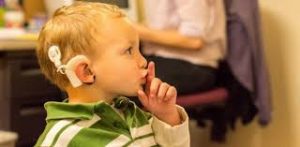
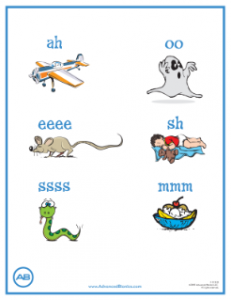
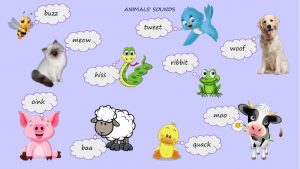
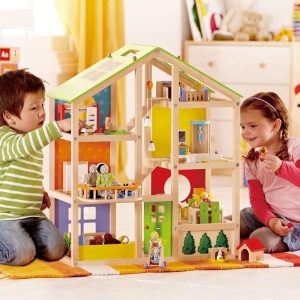
Leave a Comment
(0 Comments)